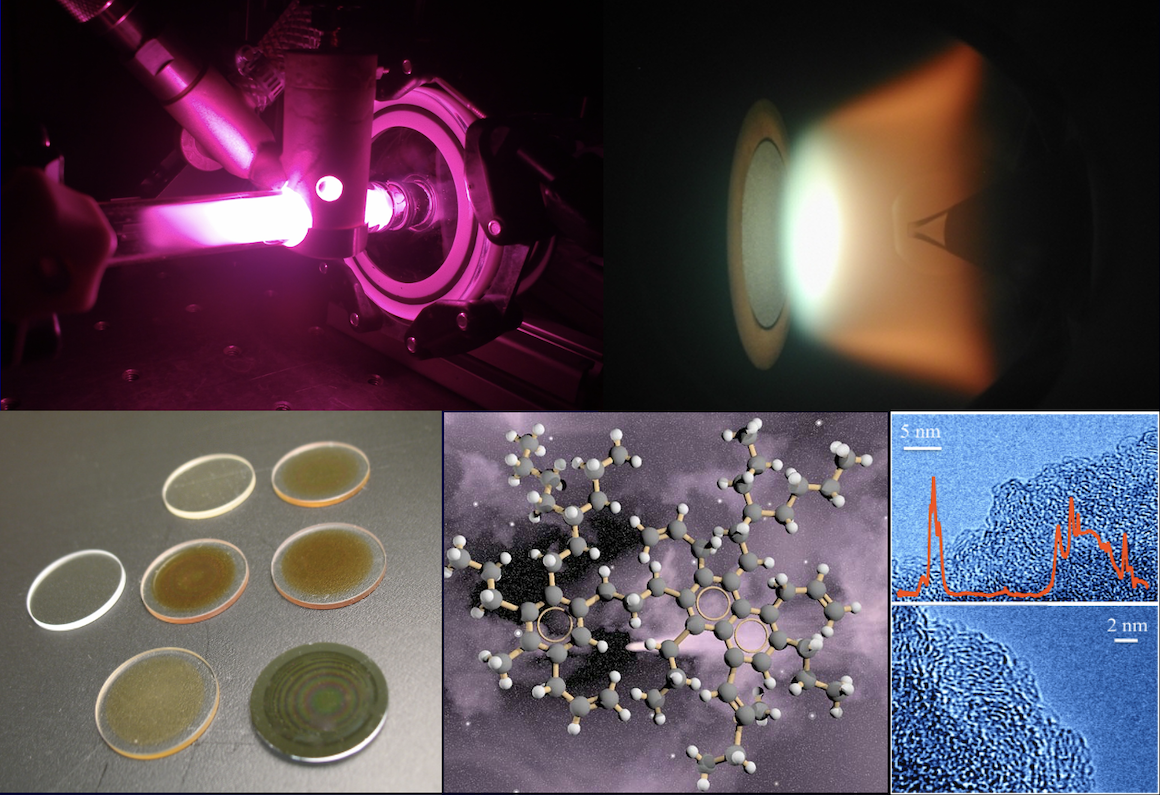The interstellar medium (ISM) is populated by various forms of large, isolated carbonaceous systems, ranging from large molecules to solids: polyaromatic hydrocarbons (PAHs), (hydrogenated) amorphous carbons, (nano-)diamonds.
Aromatic infrared bands (AIBs) are characteristic emission bands observed in ISM in the mid-infrared that trace polyaromatic nanoparticles. Not yet attributed to a clearly identified carrier, these bands are the subject of intense experimental, observational and numerical simulation activity in our team. This includes experiments dedicated to the production of analogues (Nanograins setup) with relevant size distribution and enabling spectral characterization to be carried out.
Hydrogenated amorphous carbons (HAC or a-C:H) are another important component of interstellar dust that we study experimentally (Sical and Insolite setups). These solids have been detected in mid-infrared absorption. Many observations have confirmed their presence everywhere in the diffuse ISM of our Galaxy and in other galaxies.

Among the solids detected in interstellar molecular clouds, in dense phases around young protostellar objects, or as products of active chemistry in some envelopes of mass-losing stars, “ice mantles” are solids at a few tens of degrees Kelvin that are particularly interesting. They represent an interface between the refractory carbonaceous and silicate materials that built the first interstellar grains. The molecules/radicals condense at low temperature, react with ice and are exposed to UV and cosmic rays. They effectively contribute to the enrichment of the interstellar medium through the formation of increasingly complex molecules. These interstellar ices also play an important role in the radiative transfer of molecular clouds. Gas-ice exchanges contribute to the development of a rich chemistry in the gas phase. They provide the building blocks for a complex evolution of matter that can later be incorporated into protoplanetary disks and planetesimals, the building blocks for the formation of planets and other stellar system bodies. We are experimentally measuring different ices mixtures relevant to represent the main components of astrophysical mantles, to enable comparison with their observed signatures and to study their contribution to interstellar chemistry.
Contacts :
Emmanuel Dartois
Marie Godard
Thomas Pino